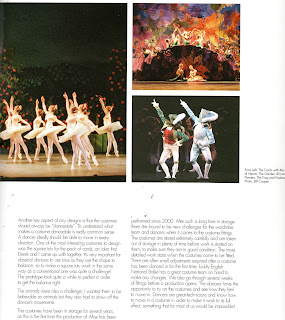Making My Own Feathers
It is a very basic technique although the result is very effective.
To start I cut some ridgeuline into a small strip to represent the spine of the feather and to create stability. I then cut some fabrics (use a reasonably lightweight fabric to get the best effect)then use a zig zag stitch on the sewing machine and sew on top of the ridgeuline. The final step is to cut into or wire brush the feather carefully to create the feather effect.
I found that the heavier fabric loses the movement which makes it look like a feather.
 |
| A thin strip of ridgeline acts as the spine of the feather. |
The feathers when they are made are very delicate as the fabric's grain is at different angles, so I've found that sometimes the little strands of feather come apart, however I think it gives it a more life like quality.
I experimented with other fabrics, they all react differently some are more delicate than others.
 |
| This is the first stage, cutting they fabric cutting the ridgeuline Then sewing it on to the fabric. |
 |
| I then cut in to the fabric to create the effect of a feather. |
 |
| Feather braid stitched to the back. |
I will defiantly use this technique in my project, I am very pleased with the outcome of the experiments and think they look like real feathers. Although I still feel that using real feathers as well as these home-made feathers would give a better more textured effect.



































